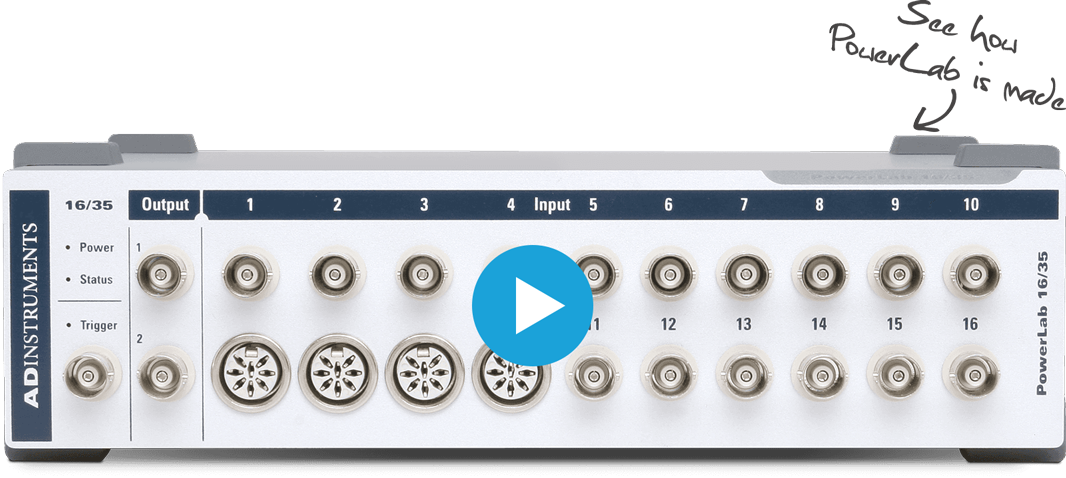He calls it the "miracle molecule". The molecule is oxygen, and Professor Damian Bailey is looking at how it makes our most important organ - our brain - work better, for longer.
Professor Damian Bailey
Damian Bailey might just be one of the world's most extreme scientists. The Professor of Physiology and Biochemistry at the University of South Wales is a former international sportsman and endurance athlete, and his research regularly takes him to the tops of mountains and freediving down to depths that push the limits of human endurance. His research reveals fascinating insights into what pushing ourselves to the limit can tell us about our brains and bodies.
Oxygen and our brain
Damian’s research focuses on the factors that regulate oxygen transport to the brain. To do this, he studies the brains of high-performance athletes like Olympians, high-altitude mountaineers, and free divers, who are able to get unusual levels of oxygen to their brains in low or no oxygen environments. He also looks at the brains of people with dementia and stroke.
The link between the two is this relationship between oxygen - what Damian calls the “miracle molecule” - and how oxygen is transported to our brain. Damian explains, “The brain is the “neuronal governor” taking charge of every other organ in the human body. But, paradoxically, the brain has evolved to be so reliant on this precious supply of oxygen, rendering it especially vulnerable to failure, as with the clinical complications associated with stroke."
"So we’re looking at the role of oxygen in world-class athletes, who have the best adaptations of all, and comparing them to diseased patients, who have blood trickling into their brain, and who are prone to dementia and stroke as a result." This research helps define the limits of brain oxygen delivery across the spectrum of health and disease, from the super-fit Olympian to the super-sick patient. Damian says, "The research is very dynamic, very applied in many respects. But, ultimately, there is a very strong clinical focus on understanding why some individuals succumb to disease and why oxygen is so important for the brain, and the implications of not getting enough oxygen to the brain."
Aging and Exercise
Understanding how athletes can achieve remarkable feats helps shed unique light into what causes certain diseases of the brain in later life, as we get older and as we became less physically active. Damian's insights could tell us more about the causes of brain impairments such as stroke and dementia and potentially offer alternative ways of preventing or treating them.
“More people are living until old age, which is associated with an increased prevalence of neurodegenerative diseases,” Damian says.
Can physical activity slow down the processes that contribute to age-related disease?
“Can we improve quality of life in our aging population? Can physical activity slow down the processes that contribute to age-related disease?"
Damian is especially interested in the mechanisms that allow long-term exercise to improve cerebrovascular function and understanding how this impacts on oxygen transport and clinical outcome. His research has shown that exercise is a promising countermeasure to aging and the associated neurodegeneration. Physical activity could even help to protect against Alzheimer’s and dementia.
“I'm especially interested in the brain and how adaptable the brain is to exercise. In particular, Alzheimer's disease is certainly singularly one of the most prevalent of all the diseases of the brain. We think it's associated with an impairment with getting oxygen to the brain. There are no curative treatments for it and exercise is a promising countermeasure that can improve oxygen delivery to the brain and bring a whole variety of benefits, ultimately improving a patient's quality of life.”
The Best Exercises For Brain Blood Flow
The Role of Free Radicals
To understand the benefits of exercise on brain function, Damian focuses on free radicals, molecules that regulate oxygen delivery to the brain, for good and for bad. Having showed for the first time in exercising humans that free radical formation increases in skeletal muscle - conventionally accepted as a bad thing given these molecules’ capacity for structural tissue damage - he has since demonstrated that, in physiologically controlled amounts, free radicals act as adaptive signalling molecules that contribute towards improving vascular health, not only within muscle but also in the brain.
These adaptations allow the exercising brain to function as if it were over a decade younger, which can reduce the incidence of stroke and dementia - truly “exercising the brain for gain.” Damian says, "It's a dream result. The power to fight age-related neurodegeneration could be available to everyone, at no cost and without the adverse side-effects that can come with medication."

Studying extreme athletes can improve our understanding of oxygen deprivation.
Image: Jakob Borman
Experiments at the Extremes
Damian's search for unique insights into the fundamental physiological mechanisms that get oxygen from the air to our brain has taken him to some of the most extreme environments on the planet. He's been involved with studies of freedivers who dive dozens of meters below the ocean's surface, to expeditions up some of the highest peaks on the planet, as well as applied studies at the North and South Poles. "Working with freedivers and high-altitude mountaineers emphasizes how precious oxygen is for the brain; it becomes especially clear when for example, some of the freedivers can hold their breath for over 11 minutes."
Studying how the brains of high-performance athletes like freedivers and mountaineers cope with the extremes of oxygen lack can ultimately improve our understanding of the mechanisms that limit human tolerance to oxygen deprivation and develop new "target" therapies that could ultimately save patients' lives, particularly in intensive care.
"As we explore unique insights into fundamental physiological mechanisms, we’ve got a fantastic opportunity to incorporate a real sense of adventure in some of the research that we do. Our clinical and applied models allow us to ask precisely why we have evolved with a brain that is so reliant on oxygen and to what extent does oxygen available to the brain influence our trajectory towards disease.”
ADInstruments Science Hero: Professor Damian Bailey
The Right Equipment
Conducting experiments in these environmental extremes also requires special equipment - and that’s where ADInstruments is proud to help. As well as the recording of a complex array of real-time signals including heart rate, blood pressure, breath by breath expired gases, brain blood flow, activity, and oxygenation – Damian also needs the equipment to be compact, portable and robust. That's why he uses PowerLab for data acquisition.
PowerLab: Data with Integrity
“ADInstruments hardware, including the PowerLab in particular, has revolutionized what we can do scientifically in these challenging environments and we can truly bring our laboratory to the mountain. The equipment has performed admirably in extreme environments characterized by extremes of temperature, wind, and hypoxia. When you spend a lot of money to get a piece of equipment up into the mountain ranges, you want that equipment to work when you test your human volunteers - fortunately, the PowerLab is especially durable.” He adds, “You can even rest your coffee on them - which is a great thing when you’re climbing!”
Damian Bailey is Professor of Physiology and Biochemistry at the University of South Wales where he is currently the Royal Society Wolfson Research Fellow and Head of the Neurovascular Research Laboratory.

September is World Alzheimer’s Month, an international campaign to raise dementia awareness and challenge stigma. Visit www.worldalzmonth.org to see how you can get involved.

